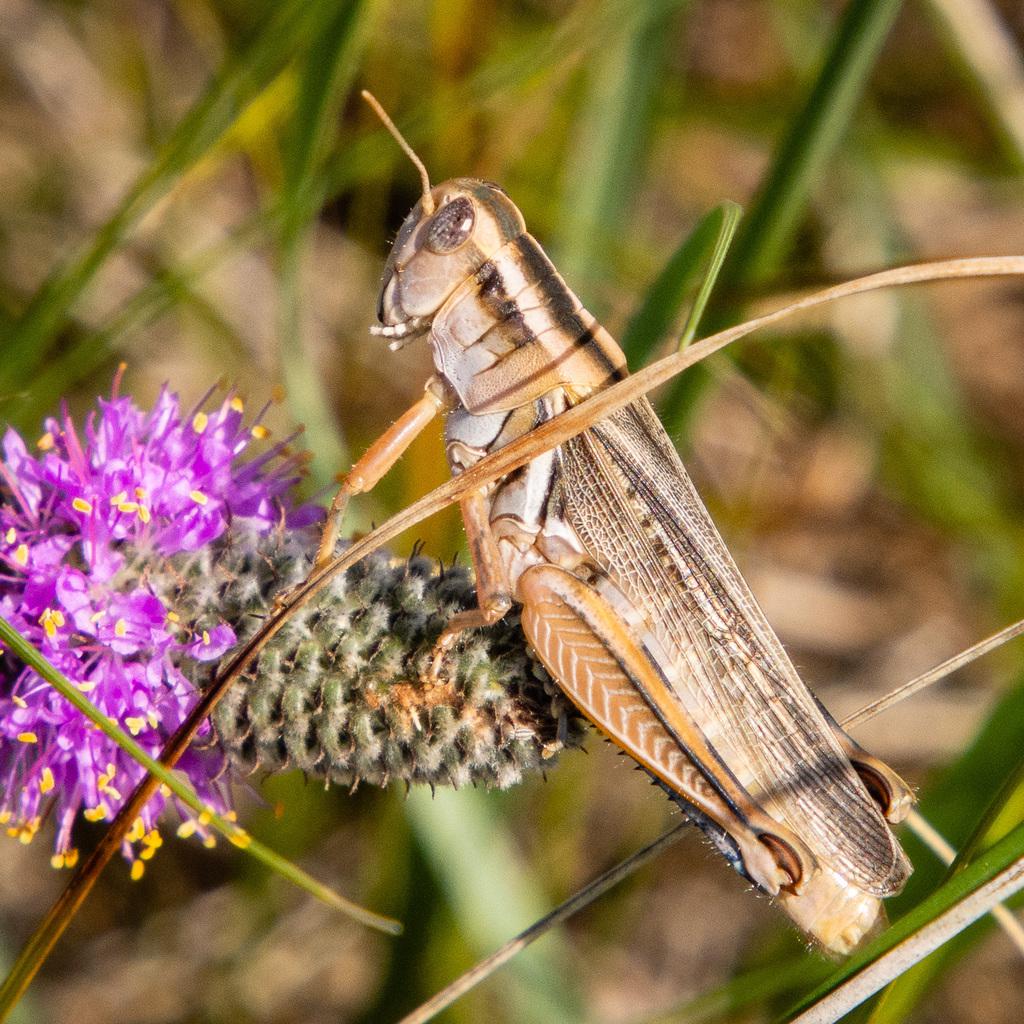There are many different Grasshopper species in a variety of sizes and colors. They use their powerful back legs to hop and escape danger. They can also fly.
Grasshoppers eat grass and other plants. Only a few (Two-striped, Clear-winged) are considered pests by farmers as they can destroy crops. Others, such as Club-horned Grasshoppers found on pastures in early spring, don't harm crops.
Females are larger than males and have sharp points at the end of their abdomens to help them lay eggs underground. The eggs are usually laid in the fall and hatch as nymphs in the spring. The nymphs resemble adult grasshoppers but have no wings and they'll shed their skins many times as they grow.
Could it be? Grasshoppers are sometimes called Short-horned Grasshoppers to distinguish them from Katydids and Crickets that have much longer antennae.
Did you know? Grasshoppers' eardrums are located on their abdomen, while their organs for smell are on their antennae.
See Also: Cicada, Cricket, Katydid








